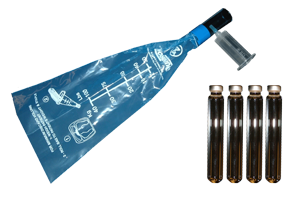 The lactulose breath test is a test which is used to diagnose the presence of small intestinal bacterial overgrowth (SIBO). In SIBO, excessive numbers of micro-organisms accumulate in the small bowel, interfering with digestion, and leading to painful gas, bloating, belching, or acid reflux shortly after consuming food.
The lactulose breath test is a test which is used to diagnose the presence of small intestinal bacterial overgrowth (SIBO). In SIBO, excessive numbers of micro-organisms accumulate in the small bowel, interfering with digestion, and leading to painful gas, bloating, belching, or acid reflux shortly after consuming food.
There are a few kinds of breath test, but the most useful one at present is the lactulose type which tests for both hydrogen and methane. In this test, the patient consumes a measured amount of lactulose – a sugar alcohol which is not absorbed into the body. This sugar is fermented by bacteria in the gut to make hydrogen and possibly methane. These gases are absorbed into the blood stream, transported through the lungs, and exhaled in the breath. The lactulose breath test measures the concentration of these gases at regular intervals after consuming the standard lactulose dose.
In the case of normal digestion, gases are primarily produced once the sugar reaches the colon after two or more hours; whereas in the case of IBS, when SIBO is present, excessive bacteria in the small intestine ferment the lactulose early so that the concentration in the patient’s breath rises fairly rapidly after consuming the standardized dose. A graph for hydrogen and methane gas levels over time can be constructed that shows a steep early rise or double peak for SIBO positive patients. SIBO is diagnosed when the concentration rises above some pre-determined threshold within a specified time span.
Prior to the test the patient will typically have to fast for a period of time and also avoid certain foods and antibiotics. On the day of the test the patient will drink a dose of the lactulose solution and then consume nothing more for a few hours. Typically at half hour intervals the patient will have to blow into a bag which contains a special receptacle for a test tube. The tube becomes filled with a sample of the breath. Around 10 such tubes are collected during the test and these are sent off to a lab for analysis. Test kits are available which allow the patient to carry out the test at home.
The main negative outcome that can be experienced during this test is that the lactulose can give the patient a bloated belly and might exacerbate their IBS for a few days.
If the test result is positive, it is common for a doctor to then follow up by prescribing pharmacological or herbal antimicrobials, or recommending a low fermentable diet such as the low FODMAPS diet or the Specific Carbohydrate Diet, although the evidence that any particular diet can actually cure SIBO is poor.
